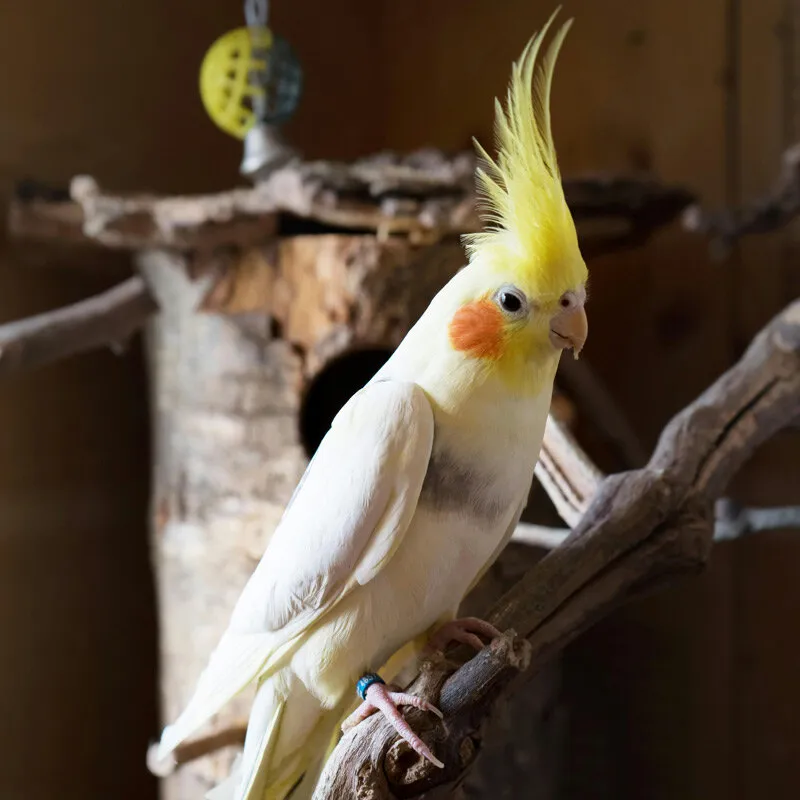Cockatiel behavior can be both fascinating and puzzling for new bird owners. These small parrots, with their distinctive crests and cheerful whistles, often display quirky habits that differ greatly from dogs or cats. Drawing from personal experiences with beloved cockatiels like Elvis and Gracie, this guide breaks down common cockatiel behaviors, helping you decode what your feathered friend is trying to communicate. Whether it’s beak bonking or hissing, understanding these traits fosters a stronger bond and ensures your pet’s well-being.
I’ve shared my life with cockatiels for decades, starting with Elvis, a normal gray I adopted at age 9 after saving my pennies. Unlike my dogs—who devoured anything, begged for pets, and chased balls—Elvis was a world apart. He arrived shy in a cardboard carrier, hissing and nipping when handled. Through patience and observation, I learned his preferences, from shredding paper to mirror fascination. These early lessons in cockatiel behavior highlighted how these birds thrive on routine and respect for their space.
Cockatiel Lessons from Elvis
Elvis taught me volumes about cockatiel behavior through everyday quirks. He adored chewing paper, once destroying a pen pal letter (remember those?). Brushing my teeth revealed his love for reflections; he’d whistle enthusiastically to his mirror image. Showers added steam he enjoyed, but his beak-banging on mirrors, counters, and even my mom’s vase worried me—I feared injury, mistaking natural beak flakes for damage.
His antics peaked during a birthday sleepover. Fueled by candy, my friends and I settled in, but Elvis protested with nips and hisses when I tried to show him off. He craved bedtime solitude, a key cockatiel behavior lesson: respect downtime. Over 21 years, Elvis revealed his world—whistling, hopping, and banging—proving cockatiels aren’t “crazy” but expressive in unique ways.
 cockatiel on perch among other branches and toys
cockatiel on perch among other branches and toys
Photo by F. Hektor/Pexels
These experiences underscore the importance of observing individual cockatiel behavior. According to avian experts at the Association of Avian Veterinarians (AAV), such exploratory actions like beak grinding and mirror play stimulate mental health, reducing stress in captive birds.
Cockatiel Lessons from Gracie
Gracie joined during Elvis’s later years, reigniting my amazement at cockatiel behavior. A classic male, he head-bangs, whistles, hops, and hisses during “me time.” Unique to him: upside-down cage hangs with wing flaps, showering debris during cleanups—a messy but playful cockatiel trait.
Pet-sitting a female cockatiel showed gender nuances; she chirps more than whistles and prefers shoulder cuddles over mirrors. Yet both share fluffed cheek feathers and beak grinding when relaxed, plus alert chirps for noises—universal cockatiel behavior signaling “Listen up!”
Experts note these displays often tie to hormonal cycles or bonding. The Lafeber Company, a trusted pet bird resource, recommends enriched environments with mirrors and toys to channel such energies positively, preventing boredom-related issues like feather plucking.
Common Cockatiel Behaviors Explained
Cockatiel behavior varies, but patterns emerge across individuals:
Beak Bonking
Males often “bonk” beaks on perches, toys, or mirrors to flirt—with birds, owners, or reflections. Paired with leaning in and whistling, it’s affectionate courtship. Females may do it mildly, but males amp it up.
Hopping
Frequently with bonking, hopping escalates excitement. It’s a joyful display, mimicking wild foraging or mating dances.
Hanging Upside-Down
This stretches wings, asserts territory, or signals play. Flapping adds dislodged feathers—normal unless excessive, per AAV guidelines.
Hissing and Nipping
A warning to back off; hissing precedes lunges or bites. Respect it to avoid escalation. Cockatiels value personal space, especially newcomers.
Other traits include paper shredding for nesting instincts and steam-loving baths. Monitor for extremes: constant aggression might signal health issues like nutritional deficiencies. Consult a vet certified by the American Board of Veterinary Practitioners (ABVP) for tailored advice.
For more on bird nesting habits, check bald eagle nesting behavior.
Why Understanding Cockatiel Behavior Matters
Decoding cockatiel behavior builds trust and prevents misunderstandings. Elvis and Gracie thrived because I adapted to their needs—mirrors for fun, quiet evenings, varied toys. New owners should provide safe outlets: destructible toys, bathing options, and interaction on their terms.
Start with a spacious cage, pellet-based diet (80% pellets, 20% fresh veggies/fruits), and daily out-of-cage time. Avoid toxic foods like avocado or chocolate, as per Pet Poison Helpline data.
In summary, cockatiel behavior—from bonking to hissing—is normal and endearing when understood. Patience, observation, and enrichment make all the difference. Consult your avian vet for personalized tips, and explore more pet care insights to keep your cockatiel happy.
References:
- Lafeber Company: Pet Birds Species Guide (lafeber.com/pet-birds)
- Association of Avian Veterinarians (aav.org)
- American Board of Veterinary Practitioners (abvp.com)
